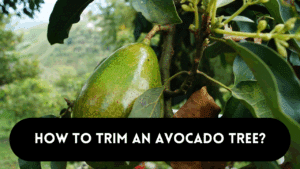If you’re the proud owner of a tree, you’ve probably had people ask you when to pull the stakes off. Even though they are necessary for the early development and stability of your saplings, tree stakes shouldn’t be kept in place permanently. In order to guarantee that your trees grow and prosper, we will examine the ins and outs of tree stakes in this article, including when and how to remove them.
Why Tree Stakes Are Important to Remove?
Prior to delving into the best time to remove tree stakes, let’s examine their function. Tree pegs are used to provide young trees stability and support. They aid with preventing the tree from bending or collapsing as a result of severe weather, high winds, or other outside factors.
When to Remove Tree Stakes?
There is no one-size-fits-all approach to staking. Staking is required in some situations, and when to remove them depends on a number of factors. Here are some pointers to think about:
Wind Exposure: Stakes may be required for a longer period of time for trees planted in high wind exposure regions. Since wind may strain a tree’s roots, pegs should be left in place until the tree is well-established.
Type of Soil: The composition of the soil is important. Stakes may be required for a longer amount of time to guarantee stability in loose or sandy soil. It is often possible to remove stakes sooner in compacted, well-drained soil.
Tree types: Growth rates vary between different types of trees. Trees that develop more quickly than others could need stakes for a shorter period of time.
Stem Diameter: Generally speaking, it’s usually time to think about taking down the stakes when the tree’s stem diameter reaches one inch.
Indications That Tree Stake Removal Is Needed
Now that we are somewhat aware of the variables, let’s examine the indicators that show when it is time to pull down the tree stakes:
Robust Root Development: Examine if the tree’s root system has grown robustly and healthily. This is crucial evidence that it can function independently.
The tree should not be leaned on the pegs; instead, it should be standing straight. It can have the stakes taken out if it can sustain itself.
Secure Attachment: To prevent the tree from growing against its natural course, make sure the ties holding it to the stakes are not too tight. It’s time to cut the bonds when the tree can support itself without them.
Weather: Take into account the time of year and the conditions. It is best to remove stakes at a quiet, temperate time. Steer clear of doing this in severe weather or during storms.
How to Remove Tree Stakes Safely?
Stake removal may seem easy, but cautious removal is necessary to prevent damage to the tree. Here’s how to guarantee a secure removal procedure step-by-step:
Examine the tree to make sure it satisfies the requirements for a safe removal. Make sure it is securely attached, has no leaning, and has strong roots.
Loosen Ties: The ties tying the tree to the stakes should be gradually loosened. Take care not to break or harm the main stem or any of the branches.
Eliminate Stakes: Take each stake out one at a time with caution. Prioritize the stakes that face upwind before moving on to the others.
Examine the Tree: Following the stake removal, keep an eye out for any indications of instability on the tree. It could be necessary to temporarily reinstall the stakes if it begins to tilt or seems unstable. If trimming is required, take into consideration training the tree to address any aberrant growth caused by the stakes or if it has grown around the ties.
Get Rid of the Stakes: After the tree is sturdy without the stakes, get rid of the stakes appropriately so they don’t endanger your yard.
Possible Dangers of Leaving the Tree Stakes Too Late
Tree pegs are useful in the early parts of a tree’s life, but if you leave them in place too long, they may not work as intended. Here are a few possible dangers:
Stunted Growth: The tree’s natural swinging motion, which aids in the development of a solid trunk, may be hampered by prolonged staking. Growth may be impeded as a consequence of this.
Weak Wood growth: The continuous support that stakes give might result in weak wood growth, which increases the likelihood that the tree will break in the future.
Girdling: The condition in which the ties cut into the tree, impairing its health, may occur if the ties are not released and the tree develops around them.
Disease and Insects Vulnerability: Because staked trees have less air circulation and more wetness around the trunk, they may be more vulnerable to pests and diseases.
A Remark about Tree Stakes Items
Durability and flexibility are important factors to take into account when choosing the materials for tree stakes. Stakes made of wood, metal, or fiberglass are common choices.
While metal and fiberglass stakes are durable and provide solid support, wooden stakes are biodegradable and may fit into the surrounding environment. Make sure the material you choose is appropriate for the particular requirements of your tree.
FAQs
How soon after planting should I bury my tree stakes?
If the wind or other circumstances are causing your just planted tree to tilt or topple, you should stake it. This is usually required within the first year or two after planting, while the exact time varies on a number of variables, such as the size, location, and soil quality of the tree.
How can I tell when the tree stakes should be taken down?
Stakes should be taken out when the tree has grown a robust and sturdy root system, is erect and does not rely too much on its stakes, and its connection ties are snug but not too tight. The time is also influenced by the weather and the particular requirements of the tree.
Are tree stakes reusable for other trees?
As long as the tree stakes are in excellent shape, you may reuse them. To stop the transmission of illness, make sure the stakes are well cleaned and disinfected before using them for another tree. Make sure the stakes are always the right size and composition for the newly planted tree.
Is it dangerous to leave tree stakes in place for an extended period of time?
Indeed, an excessive amount of time spent in the presence of tree pegs may be detrimental to the development of trees. It may result in girdling, poor wood formation, reduced growth, and heightened susceptibility to pests and illnesses. Stakes must be taken out when they are no longer required.
How should I proceed if my tree has grown above the stake ties?
It’s essential to gently loosen and remove the stake ties if your tree has grown around them. Examine the tree for any ties-related damage or unusual growth. To fix these problems, you may sometimes need to train or trim the tree.
Conclusion
For your trees to develop and stay healthy overall, you must know when to remove tree stakes. It’s about striking a balance between helping the tree through its fragile early years and letting it grow stronger on its own.
You can make sure that your trees remain sturdy and tall, contributing to the aesthetic appeal of your environment for many years to come, by adhering to the advice provided in this article. Recall that the secret is to determine each tree’s unique requirements and take appropriate action. Happy planting trees!




